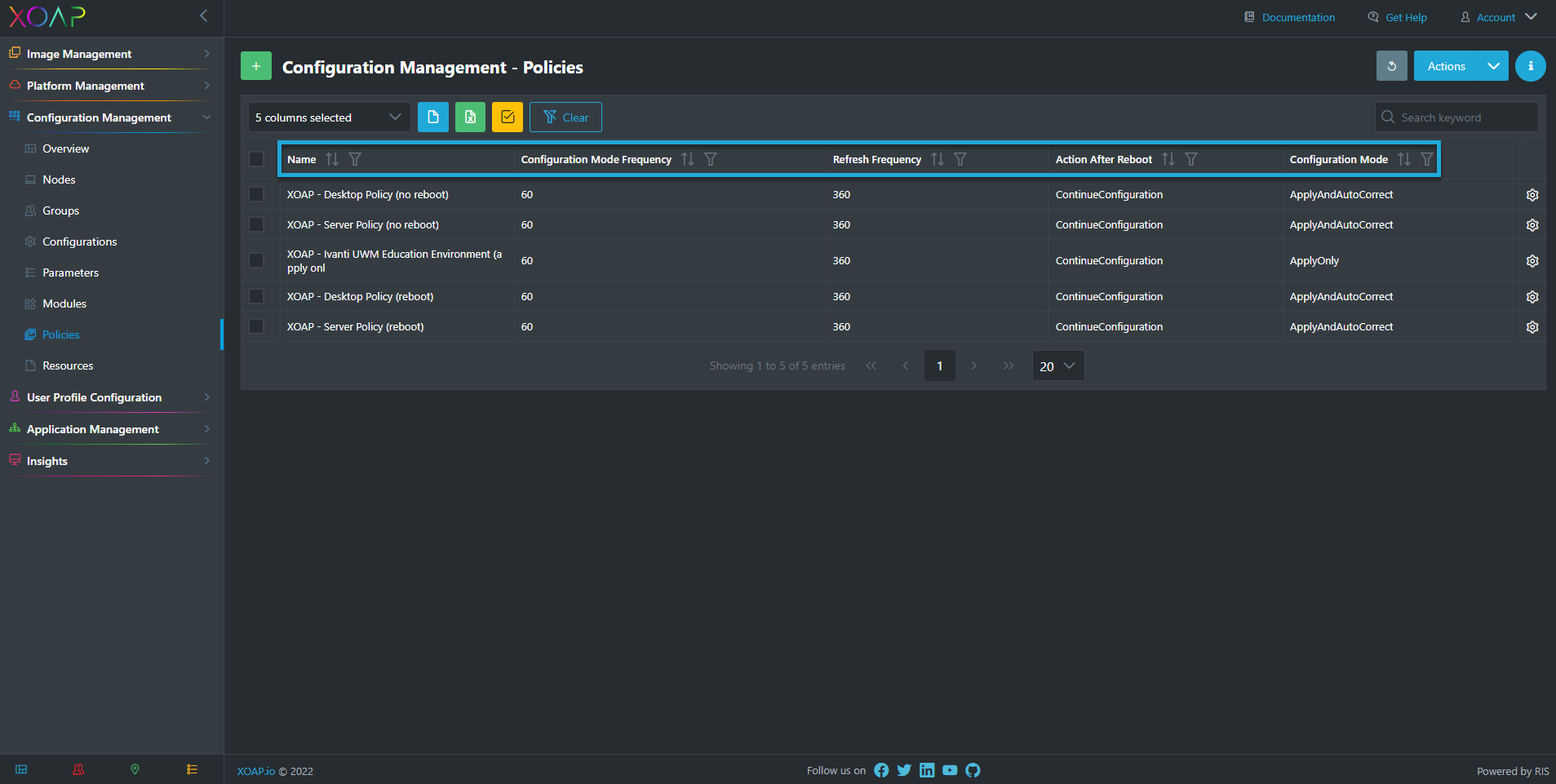This area shows all created policies within your tenant.

Table View
The table shows the following information:
-
Name: This is the name of the policy.
-
Configuration Mode Frequency: This is the configuration mode frequency that applies to the policy.
-
Refresh Frequency: This is the configuration refresh frequency.
-
Action After Reboot: This is the action that will be done after a node reboot.
-
Configuration Mode: This is the configuration mode that applies to the Policy.
Action Menu
By clicking on the Gear, the action column provides further functions for the shown items.

Edit
A pop-up with the information described below about the policy will open by clicking on the Edit function.

-
Name: This is the name of the Policy that you can adjust here as well.
-
Actions After Reboot: You can configure two actions that should be applied after a reboot:
-
ContinueConfiguration: Continue applying the current configuration after machine reboot.
-
StopConfiguration: Stop the current configuration after machine reboot.
-
-
Allow Module Overwrite: If enabled new configurations downloaded from the backend are allowed to overwrite the old ones on the target node.
-
Configuration Mode: You can configure three different modes based on your needs.
-
ApplyOnly: DSC applies the configuration and does nothing unless a new configuration is pushed to the target node or when a new configuration is available and pulled. After initial application of a new configuration, DSC does not check for drifts from previously configured states.
Note that DSC will attempt to apply the current Configuration until it is successful before ApplyOnly takes effect.
-
ApplyAndMonitor: This is the default value. The policy applies any new configuration. After initial application of a new configuration, if the target node drifts from the desired state, DSC reports the discrepancy in the logs and to our backend.
Note that DSC will attempt to apply the Configuration until it is successful before ApplyAndMonitor takes effect.
-
ApplyAndAutoCorrect: DSC applies any new configuration. After initial application of a new configuration, if the target node drifts from the desired state, DSC reports the discrepancy in logs, and then re-applies the current configuration.
-
-
Configuration Mode Frequency: The frequency in which the node re-applies and checks its current assigned configuration. How often, in minutes, the current configuration is checked and applied.
This property is ignored if the ConfigurationMode property is set to ApplyOnly. The default value is 15.
-
Refresh Frequency: The frequency in which the client checks the backend for new configuration. The time interval, in minutes, at which the LCM checks a pull service to get updated configuration.
-
Status Retention Time: The number of days the LCM keeps the status of the current configuration.
-
Proxy URL: The URL of the http proxy to use when communicating with the backend.
-
Proxy Username: The username to use for the proxy.
-
Proxy Password: The password to use for the proxy.
-
Reboot Node: Set this to enabled to allow resources to reboot the node using the $global:DSCMachineStatus flag. Otherwise, you will have to manually reboot the node for any configuration that requires it. The default value is $false. To use this setting when a reboot condition is enacted by something other than DSC (such as Windows Installer), combine this setting with the PendingReboot resource in the ComputerManagementDsc configuration.
Take care with automatic reboots on client operating systems. If it is set to true reboots are done without giving the user the chance to cancel or postpone them.